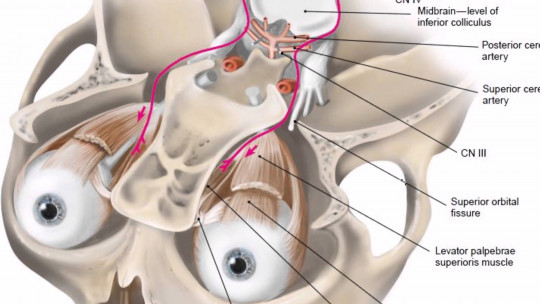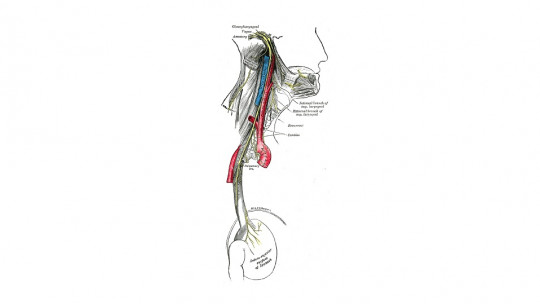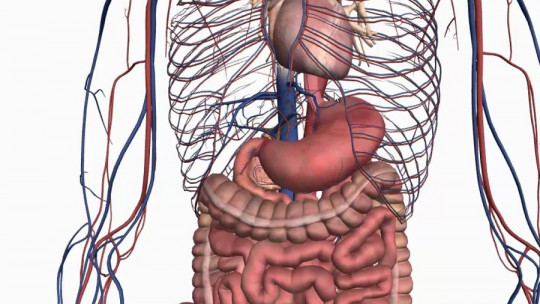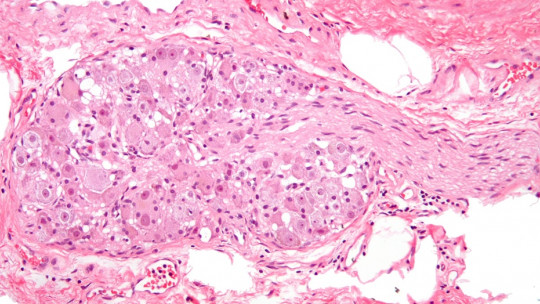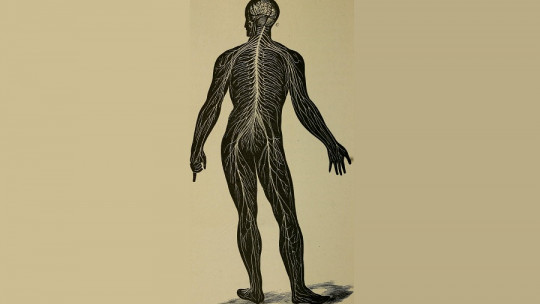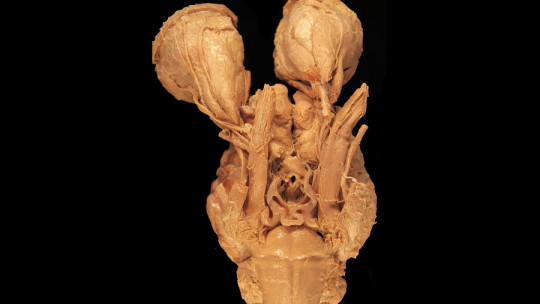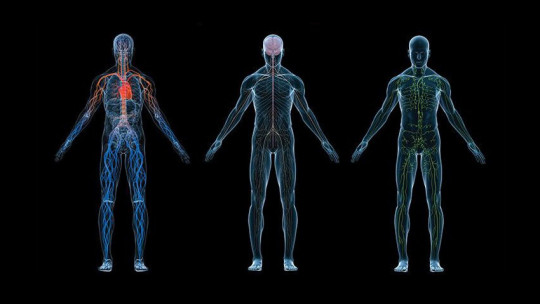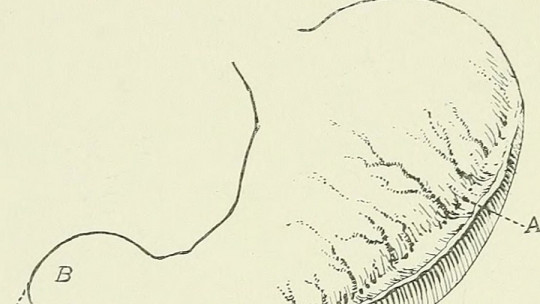
Society is advancing technologically by leaps and bounds, and with it, the knowledge and understanding of ourselves and the world around us.
Modern medicine and genetic study are disciplines that continually challenge preconceived ideas, and thanks to new research, organs of our own body that we already thought were known are rediscovered with new and fascinating properties.
Such paths lead us to statements as bizarre as “we have a second brain in our stomach.” A concept that is alien to all of us, since we only know one nerve center in our body and this is located within the cranial cavity.
Like everything in the world of science and biology, we cannot categorically state that this postulation is entirely true. Do we have a second brain in our stomach? Yes and no Continue reading to discover the correct answer to this question.
A second brain in the stomach: between myth and truth
It is clear that in order to understand the concepts to be covered on this occasion, it is necessary that we first establish the functioning and general structures of both bodies involved.
1. About the brain
The brain is the nerve center of nervous activity in all higher animals, including humans. It is responsible for thinking, memory, speech, language, reflexes and body motor control.
In a typical brain section, two types of well-differentiated tissues can be observed: white matter and gray matter The first presents this “faded” color thanks to the axons of the neurons, those endings in the shape of a “string of beads” responsible for transmitting the nervous impulse.
On the other hand, the gray matter corresponds to the agglutination of the neuronal bodies, that is, the somas.
In order not to get lost in the physiology of the lobes that make it up, we will limit ourselves to saying that the brain weighs around a kilo and a half and Its cortex contains approximately two billion neurons These figures speak for themselves about the utmost importance of this organ in the physiological framework of the human being.
2. About the stomach
The stomach, for its part, corresponds to the dilated section of the digestive tract that lies between the esophagus and the intestine Together with the duodenum it is part of the proximal infradiaphragmatic portion of this system.
We could get lost in the physiology of this structural complex, but again, with a few data the importance of the stomach for human functioning is more than clear. This portion of the digestive tube measures approximately 25 centimeters high and has a capacity of more than a liter in volume.
It presents a complex mucosa organized in a series of gastric folds, which are highly irrigated and innervated. After all, The function of this section is food decomposition so extensive contact with the rest of the body becomes essential.
As we have seen in these lines, the brain and the stomach have little to do with each other from a purely physiological point of view. Yes, both are an integral part of human functioning, but what makes some people claim that we have a second brain in our stomach?
Question of neurons
The answer lies in the neuronal composition of both structures We have already said that there are around two billion neurons in the cerebral cortex, a figure with which it is certainly not possible to compete. Even so, more or less 100 million neurons can be found in the stomach environment, that is, more than those present in the spinal column (or the same as those found in the brain of a cat).
It is because of this neuronal grouping that certain media affirm that the stomach is our second brain. But what is the function of such neuronal clustering in the stomach? We will reveal it to you below.
1. Regulation of energy balance
Weight maintenance and body composition depend on hypothalamic (i.e., secreted by the hypothalamus) and non-hypothalamic factors, such as those produced in the intestinal tract which concerns us here.
The stomach notifies the central nervous system (CNS) of the individual’s nutritional status and energy homeostasis through distention signals and metabolic processes, that is, pressorreceptors and chemoreceptors. Various protein complexes such as insulin and leptin are generated in a modulated manner in the gastrointestinal tract depending on the individual state, which react with central neuropeptides modulating appetite
To briefly summarize the agglutination of terms shown previously, it could be said that the central nervous system and the stomach participate jointly in the modulation of appetite and energy expenditure in the short and medium term. Investigating these correlations is not trivial, since obesity is an increasingly worrying pathology at a health level (it is present in 10% of the European population) and understanding the mechanisms of its emergence is one of the first steps to stop it.
2. Modulation of the emotional state
Not everything is a matter of neurons, since, for example, preliminary studies seem to indicate that there is a clear correlation between the emotional state of the individual and their intestinal microbiota
We define the microbiota as the set of microorganisms (bacteria) associated in colonies that have evolved together with humans in a state of symbiosis These, in the digestive tract, are responsible for promoting the synthesis of vitamins, digesting compounds of plant origin and promoting the specialization of the immune system, among others.
What was not so clear until relatively recently is that the composition of the intestinal microbiota seems to modulate brain development and function and even the individual’s moods. For example, preliminary research has shown that there is a clear difference in the microbiota between patients with depression and people who do not suffer from this disorder.
Likewise, more and more studies point to Possible correlations between autism spectrum disorders (ASD) and dysbiosis (microbiota imbalance) in the digestive tract Of course, there is still a long way to go to fully understand these interactions.
Furthermore, 90% of the concentration of serotonin, a molecule that directly modulates human emotions, is found in the gastrointestinal tract. Neurons in the myenteric plexus synthesize it to control intestinal secretions, motility, and sensations.
3. Manifestation of stress
As we have seen, the stomach is an important factory of neurotransmitters, the engines of our mood. This portion of the digestive tract warns us, in different ways, that a situation of stress continued over time is not sustainable at all
Hormones such as cortisol (produced in the adrenal gland) promote gastric acid secretion, among other things. Prolonged exposure to stressful and anxious situations, therefore, cause dysbiosis (imbalance in the intestinal microbiota) in the sufferer. This produces intestinal dysfunctions and less regeneration of the digestive mucosa among other things.
All of these mechanisms of action and many more can cause cramps, pain, gas, reflux in the patient, and even promote the appearance of ulcers. Thus, the stomach warns us that we have to reduce the tensions of the routine if they get out of control.
Conclusions
As is obvious from the beginning, we can affirm that we do not have a second brain in our stomach. This name is the result of an enormous exercise of abstraction, since Neuronal agglutination in the stomach system works very differently from that present in the brain mass
Even so, as we have seen, the stomach does modulate, in a certain way, moods, responses to stress and of course the individual’s appetite and energy balance.
Finally, we do not want to end this opportunity without calling for the search for real knowledge and the filtration of information. When talking about these types of topics, we cannot make categorical statements, and it is necessary to distrust those who do so. No, “An imbalance in the microbiota does not cause autism,” rather, “the microbiota among people within the autism spectrum appears to be different from that of people without this disorder, so the two could be correlated.”
It is necessary to filter the information with caution and reserve, since in the world of physiological interactions within the human body there is still much to know and investigate.

